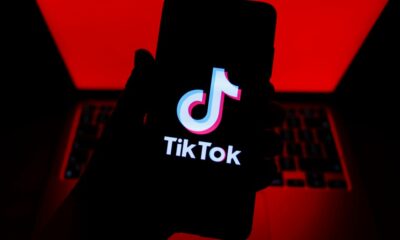MARKETING
8 Discontinued Social Media Channels and Features (+Why They Never Took Off)

What was the first social network you ever joined?
While many people will recall it being Facebook or Twitter, others might remember some of the earlier, less popular social networks. You know, like Friendster, Open Diary, and Orkut?
A lot of these original social networks go forgotten, but that doesn’t make their stories any less important. After all, these networks laid the groundwork for the social media giants we use today.
In this blog post, we’ll dive into the stories of some of the earliest social networks — and why they didn’t stick around.
From Six Degrees to Snapchat: A Brief History of Social Media
One of the first versions of a modern social network is Classmates.com, which launched in 1995 and allowed users to share messages and photos with their childhood and college classmates.
In 1997, SixDegrees was founded based on the theory that people are only separated by six levels of friends and family members. It was the first social platform that allowed users to create and curate profiles and laid the groundwork for online social networking.
Blogging (once called weblogs) came to the scene in 1998 with Open Diary, which included a social networking feature where users in groups could read each other’s writing. Open Diary laid the groundwork for later blogging sites like Xanga and LiveJournal in 1999.
In 2002, Friendster was launched to help circles of friends find one another and communicate online. It paved the way for other sites like LinkedIn (2002), Myspace (2003), and Facebook (2004) to launch networks with similar features, such as Myspace’s Top Eight friends, Facebook friend groups, and LinkedIn connections.
In the late 2000s and early 2010s came Twitter, Tumblr, Pinterest, and Google+, which experimented with short-form and visual content, as well as aggregating and saving content for later consumption. Some of the latest social networks on the scene include Snapchat, Instagram, and TikTok — platforms based on sharing authentic, ephemeral, visual content that requires as few words as possible.
Of course, this is a very brief history — and several social networks were launched and forgotten during this timeline. Needless to say, those networks still played a role in the development of the bigger social landscape we know and use today. Let’s discuss some of the networks we’ve forgotten and why they didn’t stick around.
8 Dead Social Networks You Might Not Remember
1. Vine
Launched in 2013, Vine was a popular video app where users created six-second looped videos. Users could make their content, follow friends and popular creators, and browse trending videos. It dominated social media networks from 2013-to 2016, and many of the popular videos remain relevant in pop culture and memes to this day.

When Did It Fall?
Vine was discontinued in October of 2016.
Why Did It Fail?
Vine ultimately failed because it could not keep up with other growing networks of its day that championed video, like Instagram. Many Vine executives and co-founders were also against monetization and did not want to take sponsors from brands, so creators and marketers moved to platforms like YouTube where they could monetize their content.
2. MySpace
Myspace is a social networking site where users could create a profile page to share their interests, photos, and connect with friends. It also appreciated music, so users could set a song that would play every time a friend visited their profile.
In its prime, Myspace was the most popular social networking site, even surpassing Google as the most visited website in the United States.

When Did It Fall?
In 2011, Myspace’s CEO Mike Jones announced that the platform would no longer try to rival Facebook. It would instead pivot to a social entertainment style site and, while it still exists today, does not remain a fraction as popular as it did in its prime.
Why Did It Fail?
The New York Times cites Myspace’s decline as result of consumers and changing tastes, coupled with the rise and popularity of Facebook.
Myspace also had a change of leadership when bought by News Corporation, and Tom Standage, Deputy Editor of The Economist, said “Its new owner treated it as a media outlet rather than a technology platform and seemed more interested in maximizing advertising revenue than fixing or improving the sites underlying technology.” The site soon became inundated with advertisements, affecting usability.
The site ultimately fell because of a failure to focus on site users and their experience, but instead on monetization and advertisers, which sent consumers elsewhere.
3. Friendster
Friendster, launched in 2002, was the first social network to allow users to create profiles and share content with their contacts. It was also used to learn about local events, pop culture news, and to connect with brands. At its peak, Friendster had roughly 115 million users around the world. The website currently ranks 2,949,342 in global internet traffic and engagement over the past 90 days, according to Alexa.

When Did It Fall?
Friendster rebranded as a social gaming website in 2011. It closed for good in 2015 after Mark Zuckerberg bought Friendster’s suite of social networking patents for $40 million.
Why Did It Fail?
Jonathan Abrams, Friendster’s founder, says “The problem was that Friendster was having a lot of technology problems,” and people could barely log into the website for two years. He adds, “By the time Facebook and MySpace were doing those things, Friendster had lost a lot of market share in the U.S. for stability issues.”
Computer scientists at the Swiss Federal Institute of Technology conducted an “autopsy” on Friendster to uncover its demise, and they cited a disastrous site redesign in 2009 that caused traffic and users to plummet. They also determined that it took much more effort to navigate the platform than the benefits that came from using it.
Friendster also wasn’t widely adopted by users’ friends and families, so their time was better spent on other networks where more of their real-world network was online — namely, on Facebook and Myspace.
4. Google+
Google+, launched in 2011, was a social network owned and operated by Google. It was essentially a way for all Google users to have a central location for all of the actions they took across all of the different Google platforms and services.
When Did It Fall?
The Google+ developer API was discontinued in March of 2019, and the site was shut down for business and personal use in April 2019.
Why Did It Fail?
Low user engagement was a significant factor in Google+’s demise, and the company reported having difficulty “Creating and maintaining a successful Google+ that meets customer expectations,” and said that 90% of user sessions lasted less than five seconds.
In addition, an API update in 2018 potentially exposed the personal information of 52.5 million users to outside developers, and this occurred for six days before being discovered. The Wall Street Journal reported that “The move effectively puts the final nail in the coffin of a product that was launched in 2011 to challenge Facebook Inc. and is widely seen as one of Google’s biggest failures.”
5. Open Diary
Open Diary, founded in 1997, was an online blogging and journaling website that laid the groundwork for features we see on modern blogs, like comments. Writers could add friends and change privacy settings so only specific people would see what they were writing, and it eventually expanded to different topic areas so users could write about a variety of themes.
When Did It Fall?
Open Diary closed in 2014.
Why Did It Fail?
After two major security breaches, falling subscription revenue led the Open Diary team to offer more expensive paid subscription options to recoup its losses. This move instead drove users away towards free alternative blogging sites, like Xanga and LiveJournal.
6. Ping
When he launched Ping in 2010, Steve Jobs referred to it as “Facebook and Twitter meets iTunes.” Ping was a social networking feature within iTunes where users could add friends, follow artists, and look up local concerts. Friends could also preview songs their friends were downloading and listening to.
When Did It Fall?
Ping was terminated in 2012.
Why Did It Fail?
Ping was originally meant to feature an integration with Facebook that would allow users to easily connect with friends and artists they already followed on Facebook, but the partnership fell through. Users were then left with a blank slate on which to build another social network of people to follow.
Additionally, Ping only allowed users to listen to 90-second previews of songs on its network — any longer and they had to buy the song. Since Ping was part of iTunes, it became redundant instead of an enhanced experience. Apple replaced Ping with a better integration with Facebook and Twitter that allowed for easy music sharing.
Many of the features meant to make Ping stand out from the crowd can now be seen on Spotify, where users can connect their Facebook and follow friends, see what they’re listening to, and learn more about their favorite artists.
7. Orkut
After a failed attempt to purchase Friendster, Google launched Orkut in 2004 as a place for people to add friends and share content. Users could view profiles, rate friends, add them to lists, and like their friends posts. At its peak, Orkut had 300 million users around the world.

When Did It Fall:
Google shut Orkut down in 2014.
Why It Failed:
Orkut took hold in a few countries, primarily India and Brazil, but never achieved widespread international popularity. At the time, YouTube and Google+ were outpacing Orkut’s growth, so Google refocused on these platforms in an attempt to compete against Facebook and social media. As such, the Orkut team cited the growth of Google’s other social media assets as a reason to shutter the site.
8. Eons
Eons, launched in 2006, was touted as “Myspace for boomers,” and set age restrictions that prevented anyone under the age of 50 from joining, which was later lowered to 40 in 2008. The site never experienced a huge boom in popularity around its launch and, at its peak, had roughly 800,000 users.

When Did It Fall:
Eons.com shut down in 2012.
Why It Failed:
The age targeting was restrictive for a reason, but this had detrimental effects as the user base was rather limited. It also prevented the site from being widely popularized and, as social media was just coming onto the horizon and wasn’t yet widely adopted, the platform was unable to build a successful network out of such a small user group.
Lessons for Marketers From Failed Social Media Networks
There are several lessons for modern marketers in the stories of these fallen social networks. We’re not saying that you’re always at risk of killing your brand, but keeping these tips in mind may help you maintain and grow your followers and engage with them authentically.
1. Understand your audience.
The most significant factor of success when creating a social media network is creating for the audience that you want to have. For example, you wouldn’t create a text-based blogging site if you’re hoping to attract multimedia creators.
As with all marketing practices, make sure that you have a solid understanding of your audience, who they are, and what they want, so you can create a platform that will meet their needs and keep them on the platform.
2. Meet your audience where they already are.
Many social networks fail because brands try to reinvent something that already works well, or requires extra work for users to be able to participate. For example, Ping wasn’t able to integrate with Facebook, so users had to recreate social networks that likely already existed for them on an entirely new platform.
Instead, meet your audiences where they already are and supplement their experience. Part of Facebook’s success and longevity is due to its creation of an infrastructure where users don’t need to leave Facebook to get things done. It’s grown beyond just a social network into a destination for news, commerce, and content consumption.
Marketers should experiment with new technologies and offerings to keep followers interacting with their brand more, such as creating helpful chatbots, publishing on new forms of media, and trying new strategies like virtual reality or experiential marketing to keep audiences engaged and on a website or social platform for as long as possible.
3. Borrow from your competitors.
Borrow a page from the Facebook playbook and be aware of what your competitors are doing. For example, Vine was forced to shut down because other networks were offering similar features, but did it better and provided more opportunities, like creators who could monetize their content. A recent example
4. Be authentic and not overly self-promotional.
A common thread between Ping and Open Diary’s downfall was the brand’s attempt to monetize. Users didn’t like Ping advertising iTunes music that they could only listen to for 90 seconds, and Open Diary users didn’t want to pay for something that was free on other sites.
Users want an authentic experience on social media to interact with friends, family, and their networks, not logging on to a site and being bombarded with advertisements.
The next time a new social network comes onto the scene, we’ll be here to tell you the story — and predict if it will be here to stay.
Source link























You must be logged in to post a comment Login